Making Limited Edition Quilts
- Published:
- Length: 1761 words
- Reading Time: 9 minutes
A few months ago, I had twenty of my artworks (a mix of quilts and framed applique fabric pictures) appraised by Alan Breus, a renowned fine art and museum appraiser. He loved my work, but was particularly fascinated with my unique process of creating it. Alan's opinion is that my work is functionally similar to serigraph printing, sometimes called screen-printing or silk screening. Fine art serigraphers label each print as numbered limited editions. Alan feels I should do the same with my quilts and framed works.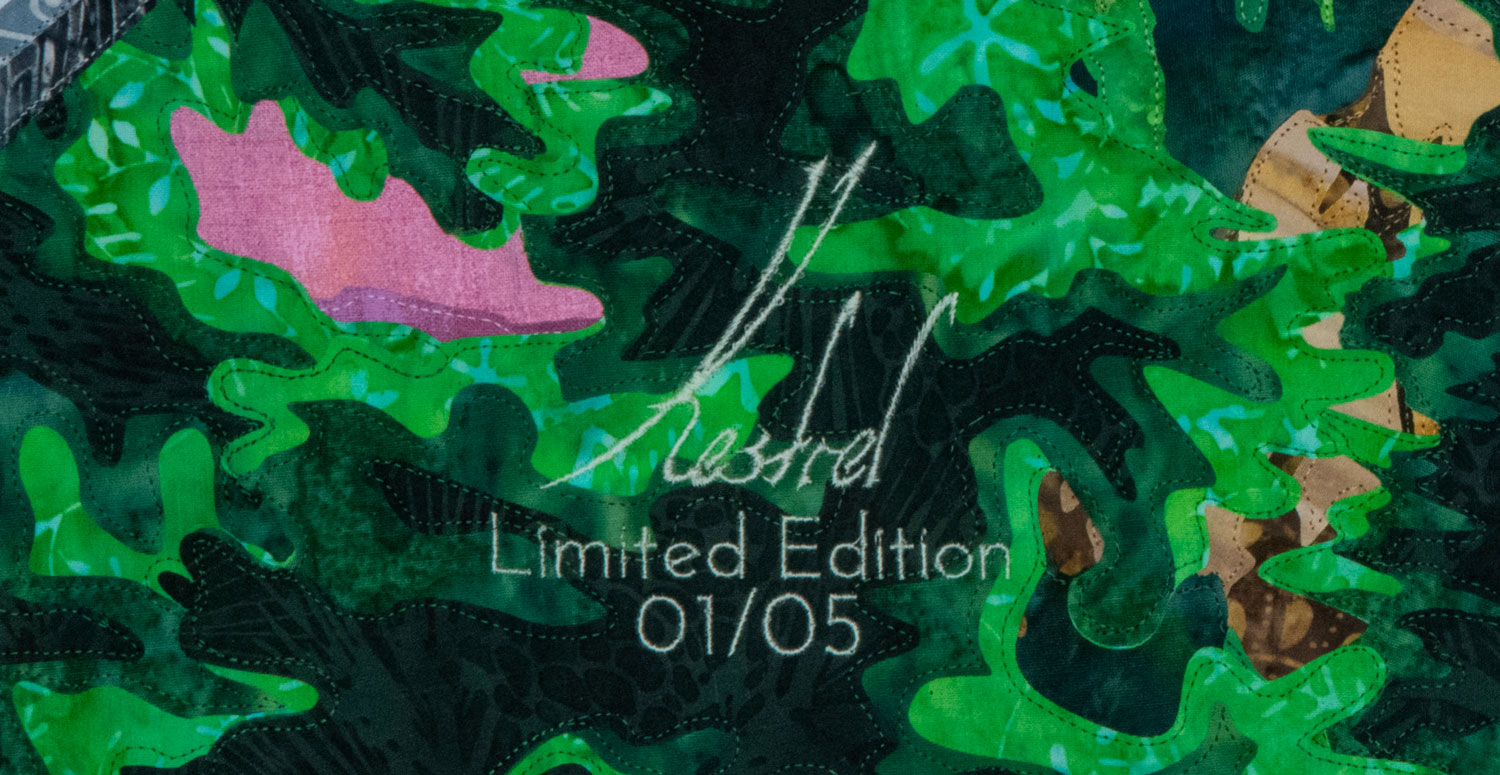
Before I dive into talking about quilting, let me back up a step and explain what serigraph printing is.
What is a Serigraph?
Serigraphy is a process of making a print by squeezing ink through a series of screens onto a surface. A different screen is used for each color of ink, so a full-color image often ends up needing a number of screens.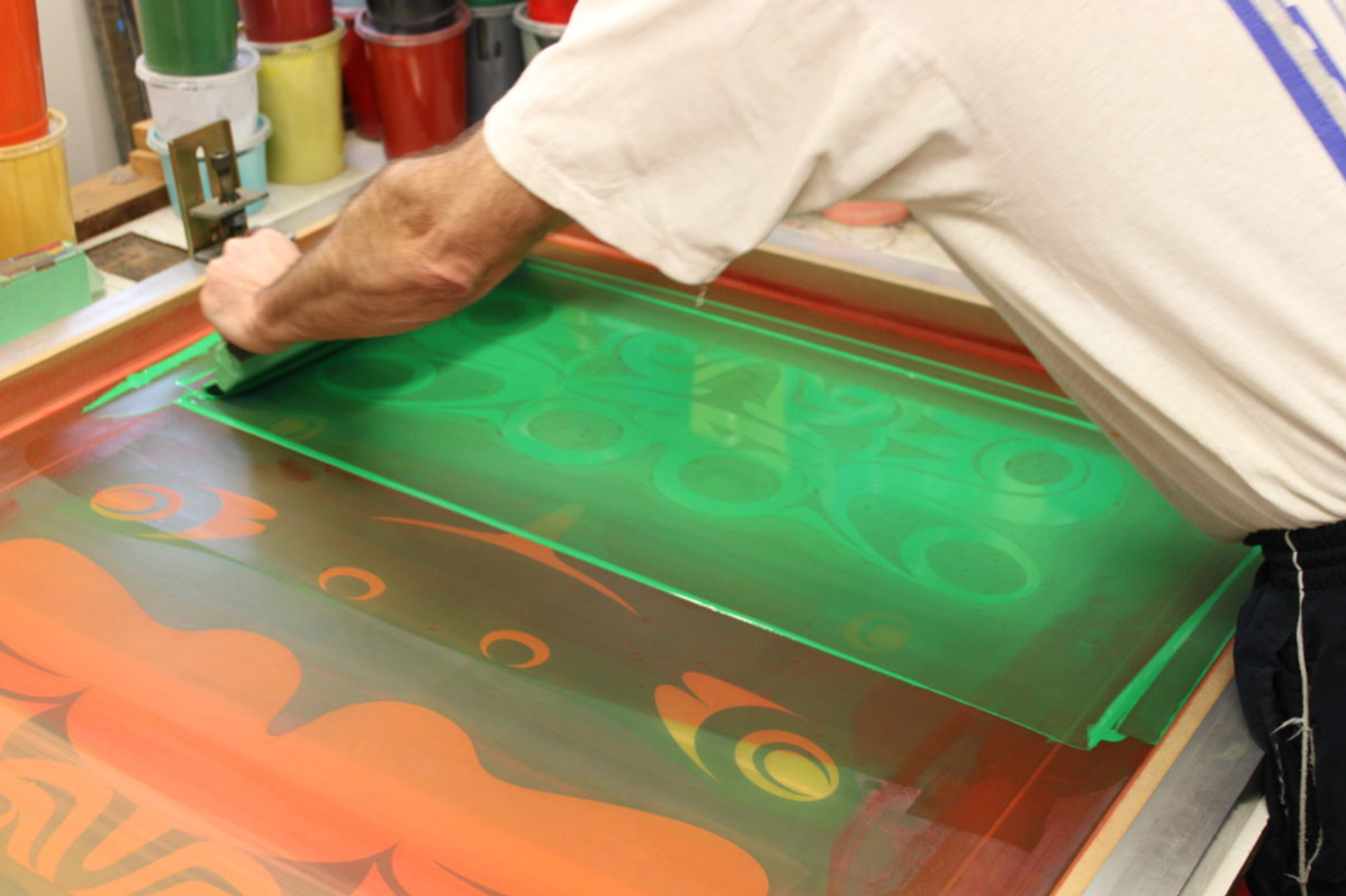
This method of printing is actually used to mass-produce all kinds of things, notably t-shirts. The entire process can be automated. But in the fine art world, serigraphy is a much more hands-on process for the artist. Each screen is handmade, and the inks are usually hand-mixed.
Because the artist is so involved in every step of the process, from designing the image to mixing the inks and hand-making the screens, every serigraph print is considered an original. There may be 100 to 250 prints in one limited edition run. Although each print looks identical to the previous, they are all considered original works of art. It's this specific fact that relates serigraphy to my unique method of creating quilts.
What makes my process special?
My pictures and quilts are made from hundreds to thousands of pieces of fabric appliquéd and sewn together. I hand-draw and color a full-size template for every design. If the finished quilt is true north, the template is my compass. It tells me what colors of fabric I need, what every piece of fabric should look like, and where every piece of fabric has to go.
Here's the template (left) for my most recent quilt, "Jason", next to the finished quilt (right).
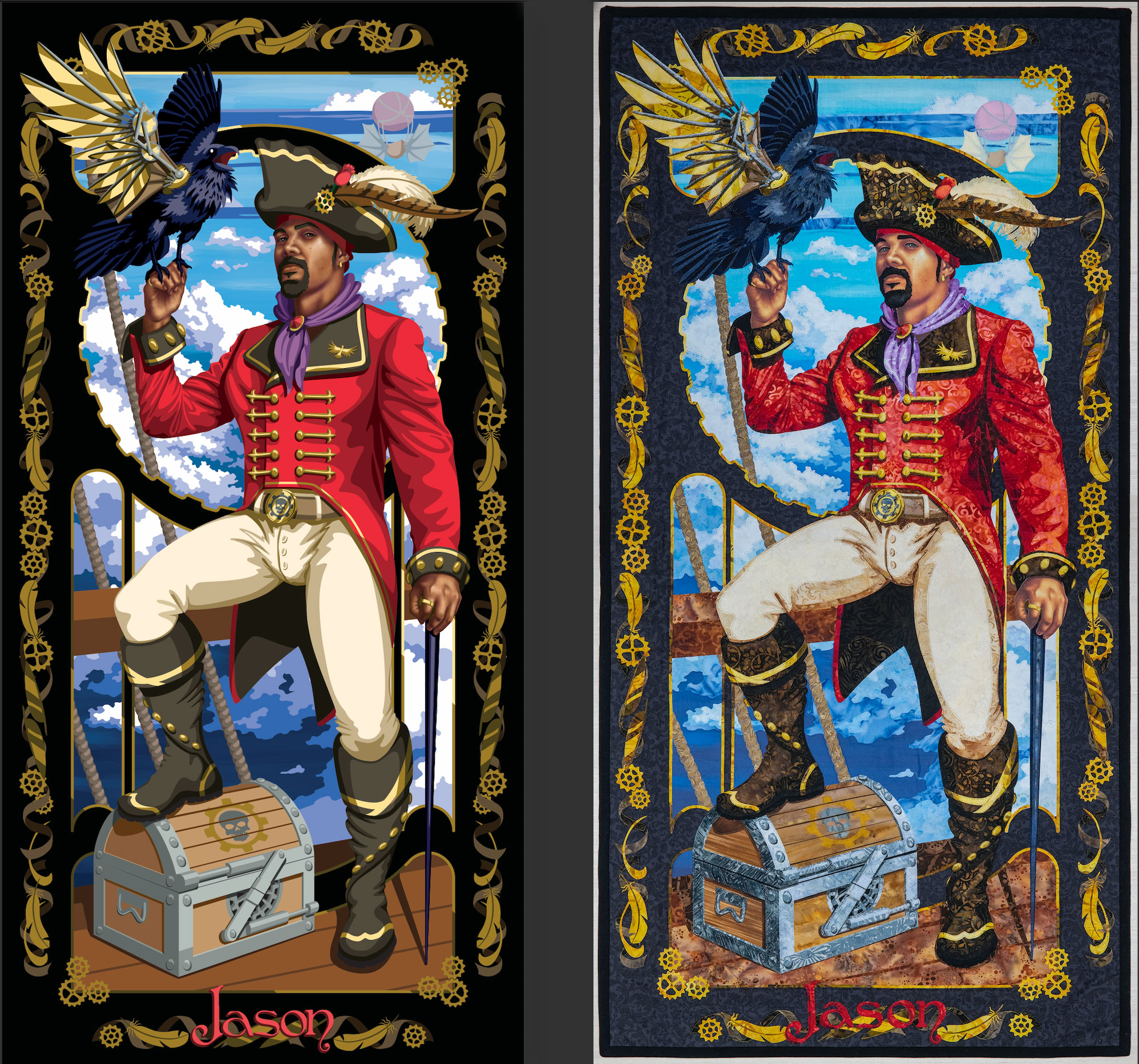
In addition, I manually design the overlap for every piece so they can fuse together, number each piece so I know where it goes, and arrange all the pieces for cutting with my Cricut Explore Air 2. Here is the numbered template (left) and the three Cricut layouts containing all the pieces that make up the steampunk raven (right).
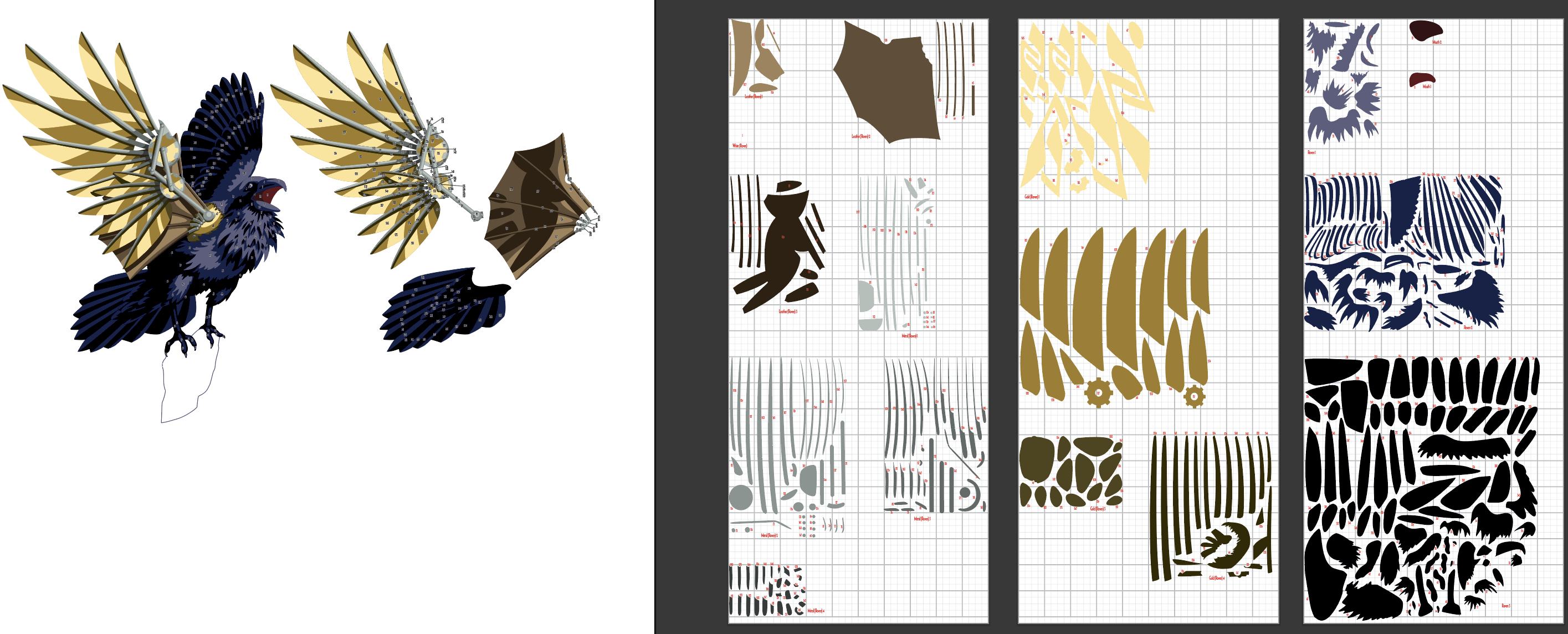
My template and Cricut layouts are functionally the same as the hand-made screens another artist would use to make his/her serigraph prints. Even though they're digital files, I can spend hundreds of hours making them myself and they're vitally important to the finished quilt. Just as another artist would be physically unable to make a serigraph print without the custom screens, I would be physically unable to make my quilts without the template and Cricut layouts.
Using a digital cutter, like my Cricut, has another advantage: It's far more precise than I could ever be. My Explore Air 2 cuts exactly what I tell it to. There is no margin of human error. This makes it much easier for me to assemble the applique pieces because they're all a perfect match to the template. Increasing the precision of cutting also lends validity to my "Limited Edition" claim should I choose to make more than one quilt of any given design.
Precision is really the name of the game. Once a serigraph printer creates his screens, he can make as many prints as he wants in that limited edition run. Even though they're all originals, every print will look exactly the same.
That's what I'm striving for with my quilts. If I use my process to make more than one original quilt from the same template, they have to all look like they belong in the same Limited Edition. Using digital files and a digital cutting machine eliminates quite a few possible variables and irregularities, but there is one last hurdle I have to cross to ensure my quilts are as similar as possible.
What if I run out of fabric?
Inks are pretty standard, so running out of a specific color isn't typically a problem serigraph printers face. Running out of a specific fabric, on the other hand, is absolutely a problem I have encountered, especially if that fabric has been in my stash for 15 years. I have nine 24"x24"x8" drawers full of fabric, so even with newer fabrics there's a good chance I won't remember from which store I purchased any given material.
The solution to this problem actually comes from a process I developed in 2018. I figured out how to print my own color swatches using the colors in my templates. In the picture below, the labeled blocks of color on the right are all the colors that make up the template on the left. I print those colors, with their labels, in a 4x4 grid on letter paper.
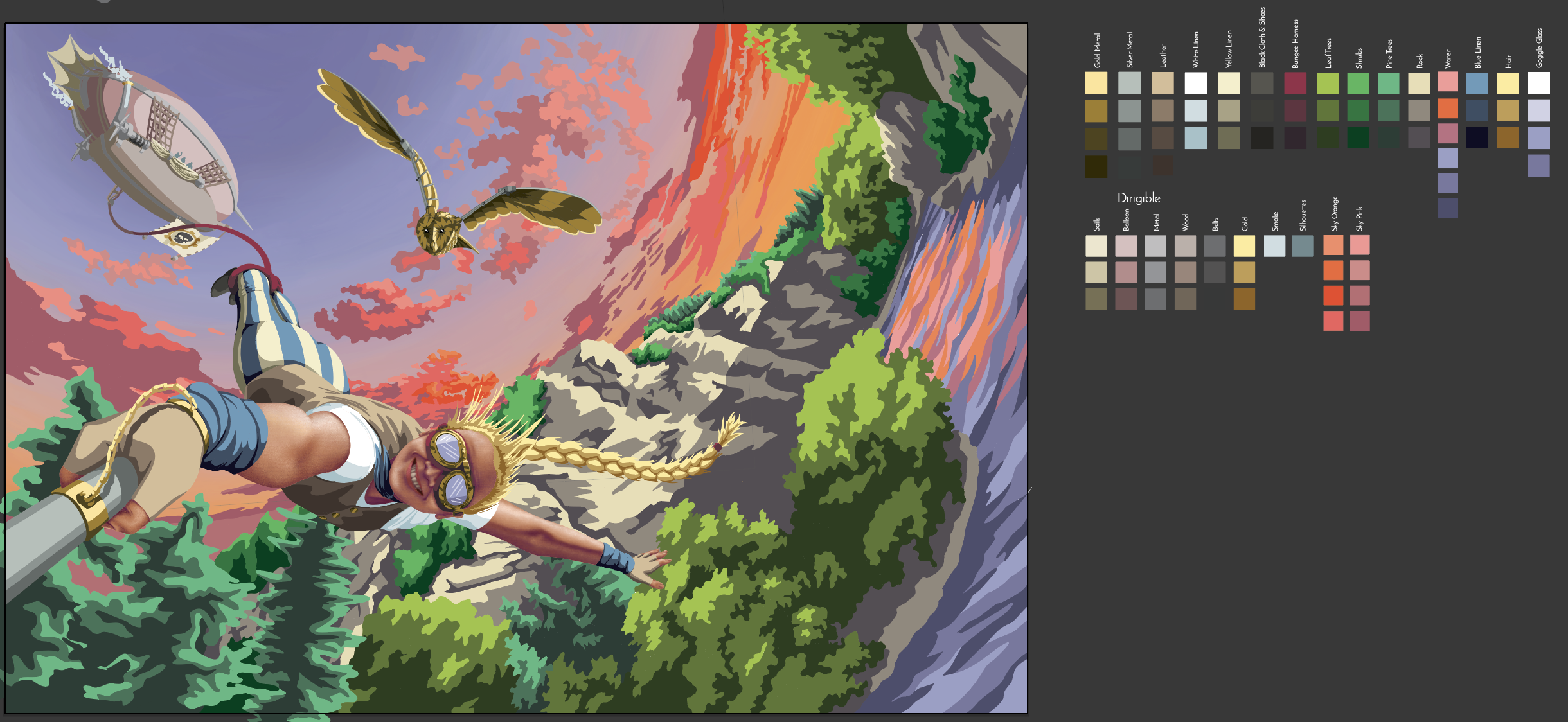
I can take those swatches with me to quilt stores (or even just look through my stash at home). The color and value of the swatch has to match the color and value of the fabric in order for it to work. Matching the color is pretty easy, but I need the help of my cellphone's camera to match the value.

As long as the color and value of the fabric match the swatch, I know that particular fabric will work in my design. This also lets me pick replacement fabrics with confidence.
What's the benefit?
At this point you're probably thinking everything I've described sounds like a lot of work. Frankly, you're right. It is a lot of work. The process of creating my template and the Cricut layouts takes 50-60% of the time I spend on any given quilt. That means if a quilt were to take me 100 hours to complete, from initial sketch to sewing the binding, I would have spent 50-60 of those hours sitting in front of my computer. Yikes.
But here's the thing...those 50-60 hours never have to be repeated. They're a one-time-only investment to create the digital files that are then stored on my computer (and backed up to the cloud) forever. Creating a second original of that same quilt will only take me another 40-50 hours. And if I make two more originals at the same time, it's only going to take me 60-70 hours because I'm able to double-up on some steps and further reduce the amount of time invested.
It's like this: The first quilt, or "Artist Proof" version, takes 100 hours. If I make another, the "Limited Edition 01/10", that takes another 40-50 hours. If I make two more at the same time after that, "Limited Editions 02/10 and 03/10", that's another 60-70 hours. I've just made three more quilts for almost the same time investment as the first one alone (100hrs vs 100-120hrs).
Side note: The edition maximum (I'm using ##/10 in the example above) is arbitrary and completely up to me. I usually use a slightly higher number, such as 10-15, for smaller quilts because they're fast. I use a lower number, like 05, for bigger quilts.
This strategy lets me get so much more benefit from every quilt design. Here are some examples:
- I don't need to make all the quilts within one edition at the same time. (The maximum number is just an indication of the total number that will be within that edition. It's the artist's way of saying, "I won't make any more than that many." It doesn't mean all of them are currently available. I can make new originals as needed or by request, as long as I don't exceed the max number in that edition.)
- I can sell multiple quilts of the same design.
- I can sell my quilts for less, making them more attractive to purchasers, and still make a healthy profit. (At $10/hour, a 100-hour quilt would cost $1000. Using the example above, I could make 4 quilts in 220 hours. At $10/hour, that's $2200. Divide by 4, and each quilt would be listed for $550. It's easier to sell a $550 quilt than a $1000 one.)
- I can show the same quilt design in multiple places/shows at the same time.
- I can show a quilt design for longer than the 3 year restriction. (Most shows require a quilt to have been made within 3 years. If I make a new quilt of a 3 year old design, I can show it for up to 6 years, or longer if I make more, should I choose to do so.)
Conclusion
Let me wrap up this post by providing a side-by-side comparison of three quilts I made this year. These quilts are all titled Mine Cart Madness. The left quilt is the "Artist Proof" version. The middle is "Limited Edition 01/10" and the right is "Limited Edition 02/10".
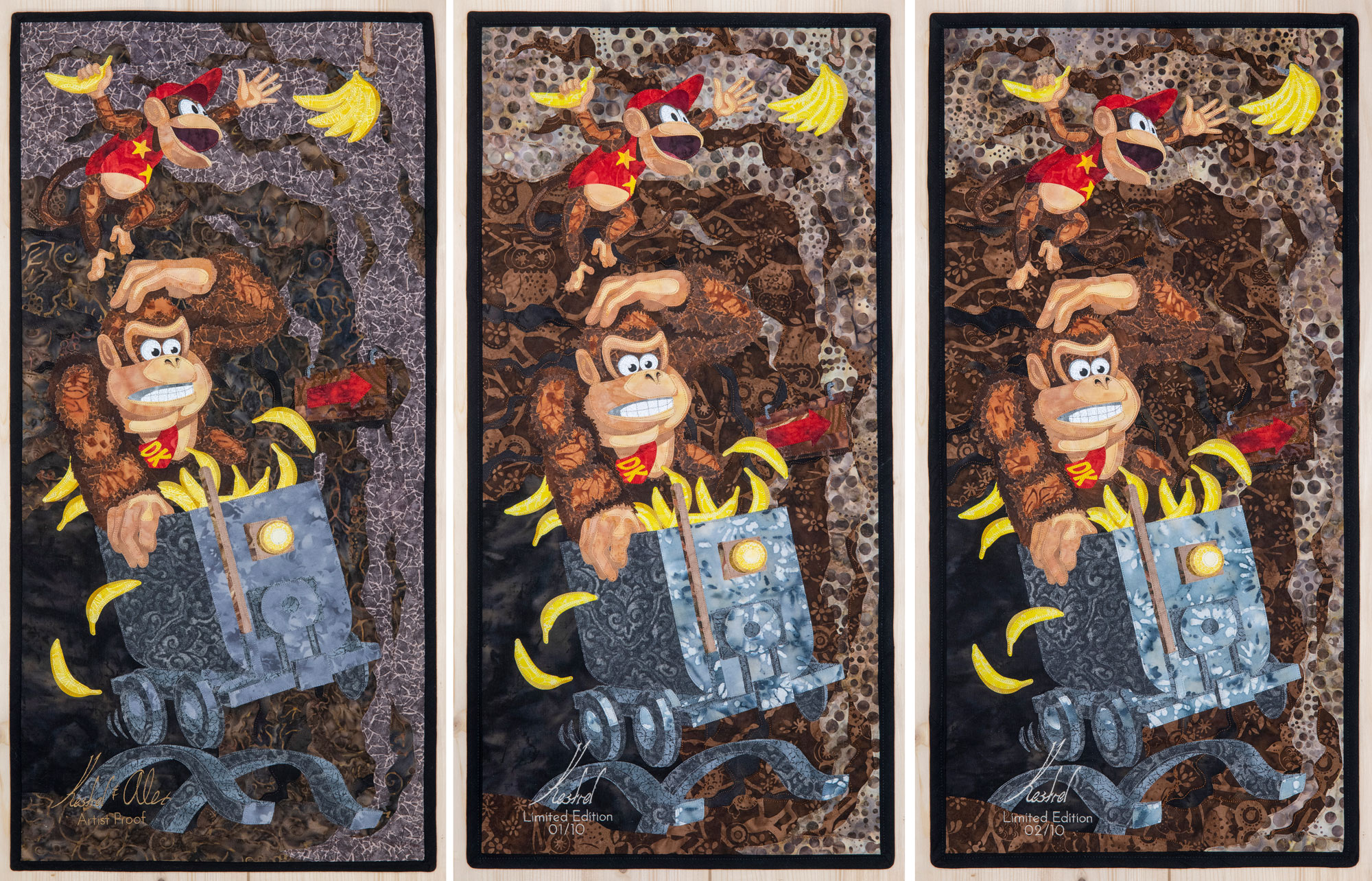
The AP version was my husband's birthday present and has been hanging in his office since we made it earlier this year. I donated LE 01/10 to a charity event. While the charity event was taking place, LE 02/10 hung at a fanart exhibit in Raleigh, NC this past summer.
Making multiple original quilts within a Limited Edition is an unheard of practice in the quilting world. It wasn't something I ever imagined doing when developing my artistic process over the past fifteen years. Now, however, with the encouragement of a respected fine art appraiser, I feel completely validated in taking advantage of this new opportunity. My hope is that this blog post will open new possibilities for quilters looking for other ways to sell their craft.
